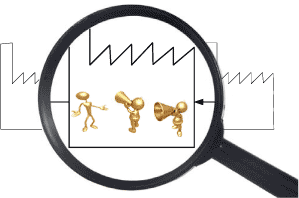|
Development of cleaner products in Berendsen's international product chains 3 Overcoming barriers in environmental product development
During the pilot development projects and other development projects of Berendsen a lot of different barriers have been experienced. Common for most of them is that they can be broken down with persistency and patience.
3.1 Braking down the barriersThe barriers that had to be overcome were:
Each barrier is explained separately below, although they are often connected. 3.1.1 Different preferences on different marketsIn many countries the focus from the market is not on health and environmental issues. For example in many countries in southern Europe “clean” means that it smells good of perfume, whereas in Denmark perfume often is related to allergy. When you use a supplier that has its main markets in other countries or to other market segments than your own company then this barrier is often apparent. Combined with other barriers, it can be difficult to overcome this one – especially as a special formulation or design of a product leads to extra costs. For Berendsen the barrier was overcome with a combination of persistency and argumentation. Finally, the supplier was convinced that the demands seen on the Danish market today would be the demands of tomorrow on their own main markets. In other words - making the new cleaner formulation as a basis for their entire product range would secure the future of their products. 3.1.2 Long communication channelsBerendsen often uses wholesalers instead of buying directly at the producer. This means that the communication from Berendsen to the producer passes through the wholesaler giving a long communication channel, meaning that communication is often delayed and imprecise (blurred).
Figure 10. Information that passes through long communication channels is often delayed and misunderstood. When looking into more detail, the communication channels are often even longer. Communication between two companies often goes through a number of departments within the companies – making the risk of misunderstanding even higher – especially as there are differences in terminology between the different departments.
Figure 11. Even within the single company there can be long communication channels e.g. between different departments. If possible the barrier can be broken down by establishing direct communication channels between e.g. the R&D department of your company and the R&D department of the relevant sub-suppliers. However, if you try to do so, you will often experience another barrier - confidentiality. The supplier is not interested in you knowing too much so that you might be able to bypass the 1st tier supplier and buy directly at the manufacturer/2nd tier supplier. 3.1.3 Differences in language and terminologyWhen you cooperate with companies in other countries, the difference in language makes it more difficult to communicate and increases the risk of misunderstandings. A similar barrier is the difference in terminology between different professions/departments. The scientific staff in the research and development department uses other words than e.g. the marketing department. Of course, if they are used to working together, this barrier is of less importance. Again a solution can be establishment of direct communication channels between e.g. the two relevant R&D departments. There is no easy solution when it comes to difference in language, but of course if it is an important long lasting relationship it might be valuable to get some language training. 3.1.4 Physical distanceThe physical distance to your suppliers makes meetings more difficult, meaning that less personal communication channels like phone conferences and e-mail exchanges are often used as the only means of communication. As good personal relations are a driver for smooth cooperation, a barrier for personal relations like physical distance also becomes a barrier for cooperation on development of cleaner products in international product chains. This barrier is obviously not easily overcome, but as new technologies develop, the world becomes smaller. If the relations are intended to be important and long-lasting, investing in personal meetings to build up relations could pay off. 3.1.5 Lack of knowledgeWithout knowledge about the products that you are going to develop or reformulate, it is not possible to make the right decisions and to know if the improvements have real effects. For cosmetic products the problem is not as big as for chemicals. The legislation makes it impossible for the producers of cosmetics to keep the ingredients confidential – except for the constituents of perfumes. However, for chemical products it is possible for the manufacturers to have much more confidentiality, and the experience from Berendsen shows that when possible they keep the information confidential. Confidentiality about which sub-suppliers are used makes it impossible to communicate directly with the experts at the manufacturers concerning reformulation – and this creates the barrier described as long communication channels. For one of the products, Berendsen solved the lack of knowledge about the products and suppliers by initiating cooperation with a manufacturer in Asia. However, for this supplier, lack of knowledge was also a barrier as the supplier lacked knowledge about the chemical and cosmetic legislation in the European Union. To solve that problem, a lot of resources were used to support the Asian supplier with information about legislation. 3.1.6 Job changes/broken personal relationsWhen good personal relations have been established over a long time, it is a barrier if those relations are broken, e.g. due to a job change for one of the persons involved. However, if the relations are not good or if the person in the other end is not ready to meet your requirements or listen to your ideas, then a job change might break down the barrier. 3.1.7 Contractual barriersOne of the major barriers for Berendsen is that in some situations they are bound to long term contracts with suppliers. This means that Berendsen is forced to stick to that supplier – even if the supplier shows no interest in developing cleaner products. To break down the barrier, long term contracts should include something about meeting requirements of the market and being willing to develop new products. For Berendsen the long term contracts include a paragraph that makes it possible to change to a new supplier if the environmental properties of a product are not good enough, and the supplier is not willing to change. At Berendsen there is also good experience with long term contracts in relation to development of cleaner products. Long term cooperation with their main supplier of laundry detergents has improved the environmental properties of the chemicals and has further optimized the laundering processes. 3.1.8 Weak “power” relationsIn situations where Berendsen is the small player and their purchase volumes are of minor importance to the supplier, the motivation for the supplier to meet Berendsen’s requirements is limited. This is certainly a major barrier that can be difficult to overcome. However, experience shows that persistent pressure and the right argumentation can break down the barrier, but it takes time.
David can defeat Goliath One of the main suppliers of Berendsen for chemical and cosmetic products for their hygiene service is a very big company based in southern Europe. The purchases by Berendsen are insignificant in relation to the supplier’s total turnover on international markets. Some years ago one or two small companies started to ask Berendsen about the ingredients of their soaps. This initiated a process where a major supplier was critically asked by Berendsen about the ingredients and if they could be improved. After some pressure, to start they developed a special product for Berendsen not containing an undesired preservative. Berendsen kept the pressure to improve the products further and after a long time the supplier decided to reformulate their standard products to meet the demands of Berendsen. As a result of this, the products that are supplied today to all customers on the markets of the major supplier have a better environmental and health profile. Hence, the pressure initiated by a few small customers of Berendsen in the end had enormous positive environmental consequences. 3.1.9 Other barriers experiencedOther ‘single event’ barriers were experienced during the development projects. For example, after a new and cleaner hand cleaner was developed and put on the market, Berendsen wanted to change the dispenser meaning that the supplier had to change to another type of packaging. During this process the supplier started to deliver their standard product instead of the reformulated product without saying anything to Berendsen. When it was discovered, the error was corrected so that the cleaner product was put back on the market. 3.2 A little good adviceSumming up the experience shows that persistency and patience in relation to your suppliers is the most efficient way to overcome the hurdles. Patience does not mean that you just sit and wait, but that you do not give up when things get slow and complicated.
|



